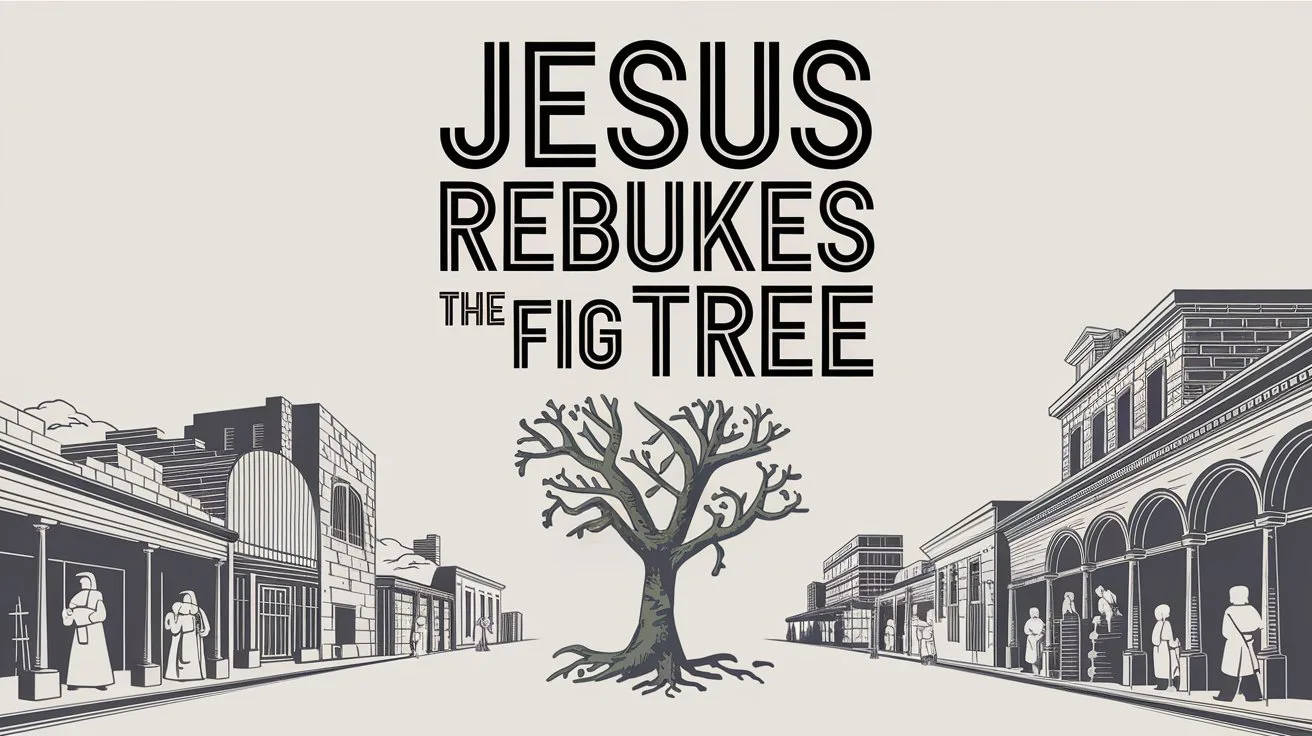The account of Jesus cursing the fig tree is recorded in both Matthew 21:18-22 and Mark 11:12-14, 20-26. The event took place during Passion Week, just after Jesus’ triumphal entry into Jerusalem.
Mark 11:12-14:
“Now the next day, when they had come out from Bethany, He was hungry. And seeing from afar a fig tree having leaves, He went to see if perhaps He would find something on it. When He came to it, He found nothing but leaves, for it was not the season for figs. In response Jesus said to it, ‘Let no one eat fruit from you ever again.’ And His disciples heard it.”
The next day, the disciples saw that the tree had withered from the roots (Mark 11:20). They were astonished at how quickly it had dried up. This was the only miracle Jesus performed that was a direct act of judgment, and it carries a deep symbolic meaning.
Why Did Jesus Curse the Fig Tree?
At first glance, this seems like an unusual act. Why would Jesus curse a tree for not having fruit, especially if it was not the season for figs? This act was not about Jesus being frustrated; it was a prophetic sign. The fig tree was often used as a symbol of Israel in the Old Testament. Hosea 9:10 says,
“I found Israel like grapes in the wilderness; I saw your fathers as the firstfruits on the fig tree in its first season.”
By cursing the fig tree, Jesus was enacting a parable of judgment upon Israel. Just as the tree had the appearance of life but bore no fruit, so too had Israel become spiritually barren.
The Symbolism: Israel’s Hypocrisy
The fig tree looked healthy (it had leaves, which meant it should have had fruit). But when Jesus examined it, there was nothing but outward appearance. This was a direct reflection of the religious leaders of Israel.
Jesus had just entered Jerusalem, where He was met with shouts of praise from the people; yet the very ones who appeared righteous were rejecting Him. The Pharisees, Sadducees, and religious elite had all the outward signs of godliness, but they bore no real fruit of righteousness.
Matthew 23:27-28:
“Woe to you, scribes and Pharisees, hypocrites! For you are like whitewashed tombs which indeed appear beautiful outwardly, but inside are full of dead men’s bones and all uncleanness. Even so you also outwardly appear righteous to men, but inside you are full of hypocrisy and lawlessness.”
The fig tree represented the nation’s spiritual condition (alive in appearance, dead in reality). The judgment upon the tree symbolized the coming destruction of Jerusalem (which would happen in 70 A.D.) because of Israel’s rejection of their Messiah.
The Connection to the Cleansing of the Temple
In Mark’s account, Jesus cursed the fig tree, then went into the temple and overturned the money changers’ tables, and then the disciples saw the withered tree the next morning. This structure (known as a Markan sandwich) ties the two events together.
Jesus cleansing the temple was a demons/”>demonstration of how corrupt the worship of God had become. The religious leaders had turned God’s house into a place of profit instead of prayer (Mark 11:15-17). The barrenness of the fig tree reflected the barrenness of their worship.
A Lesson in Faith and Prayer
The disciples marveled at how quickly the tree had withered. Jesus used this moment to teach them about faith.
Mark 11:22-24:
“So Jesus answered and said to them, ‘Have faith in God. For assuredly, I say to you, whoever says to this mountain, “Be removed and be cast into the sea,” and does not doubt in his heart, but believes that those things he says will be done, he will have whatever he says. Therefore I say to you, whatever things you ask when you pray, believe that you receive them, and you will have them.'”
This miracle was not just about judgment; it was also a lesson about faith. Just as Jesus’ words had the power to dry up the tree, so too does faith in God have the power to move mountains. This was a call to genuine belief, not just empty religious ritual.
Bearing Fruit: The Evidence of True Faith
Jesus taught that true faith produces fruit. It is not enough to have an outward appearance of religion; we must bear the fruit of righteousness.
John 15:5-6:
“I am the vine, you are the branches. He who abides in Me, and I in him, bears much fruit; for without Me you can do nothing. If anyone does not abide in Me, he is cast out as a branch and is withered; and they gather them and throw them into the fire, and they are burned.”
God is not impressed by outward appearances; He looks for a heart that truly follows Him. Matthew 7:19-20 says,
“Every tree that does not bear good fruit is cut down and thrown into the fire. Therefore by their fruits you will know them.”
If we claim to follow Christ, our lives must show it through faith, obedience, and the fruit of the Spirit (Galatians 5:22-23).
My Final Thoughts
Jesus’ cursing of the fig tree was a powerful demonstration of judgment against spiritual hypocrisy. It was a warning to Israel, and it remains a warning for us today. We cannot settle for just looking religious; we must truly follow Christ and bear fruit in our lives.
At the same time, this account is an encouragement to have faith in God. When we trust Him, our prayers are powerful, and our lives can be used for His glory. The question we must ask ourselves is this: Are we just leafy trees with no fruit, or are we truly living for Christ and bearing fruit that pleases Him?





 Get the book that teaches you how to evangelize and disarm doctrines from every single major cult group today.
Get the book that teaches you how to evangelize and disarm doctrines from every single major cult group today.